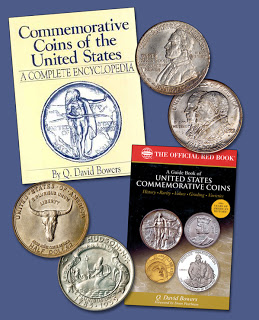
I am writing to ask your opinion as to whether I should try to build a collection of every early silver coin, 142 different dates, mintmarks and other varieties of half dollars, plus the 1893 Isabella quarter and the 1900 Lafayette dollar; or whether getting the Lafayette and Isabella plus just 48 design types of half dollars would be a better route. If you care to share any ideas, I would be appreciative. —M.C.
Answer: Dear M.C., The key to your inquiry is that you enjoy reading. Commemoratives are wonderfully historical, and because of this my answer is somewhat different than if you had expressed interest simply in grades and values.
By all means, opt for the 142 different. In a way, this has an advantage, for the 48 different types tend to be more expensive if a coin is a key to a type set. The three main issues are, as you probably know, the 1928 Hawaiian, the 1935 Hudson, and the 1935 Old Spanish Trail. Ten thousand of each were distributed. Most of the Hawaiian halves went to residents of the island, with relatively few to numismatists. Those living on the islands tended to care for them casually, with the result that today many show evidence of being polished, or have friction, or whatever. On the other hand, the 1935 Hudson and Old Spanish Trail half dollars were mainly sold to numismatists, who preserved them carefully. The Hudsons often come with various nicks and marks as they were not handled carefully during the shipping and distribution process. On the other hand, the Old Spanish Trail half dollars, which were shipped directly to L.W. Hoffecker (a numismatist who seems to have been “fussy”) are found in higher average grades. This is beyond your question, however.
An attractive part of getting one of everything is that the low mintage issues such as the 1935-D and S Boone half dollars with Small “1934” in the field, the Boone issues of 1938, the Arkansas issues of 1939, and certain others of which only 2,000 or so were distributed, are very inexpensive in comparison to their rarity. There is a lot of value in terms of actual rarity to be found among some of the varieties. The reason for this is that most people indeed collect by types, and the demand for the rare varieties is not as great.
Regarding your 1923-S Monroe, this is one of the most poorly defined of all designs. The details are mushy on even the best of them, due to the models and the dies, not to a particular coin itself. The same thing can be said, more or less, with the 1926 Sesquicentennial half dollar. The grading of these can be very iffy, and I have seen many coins certified as MS-65 that are no better than ones certified as MS-63 or MS-64. If you are skeptical about this, just do some looking around on the Internet or at a convention and I am sure you will agree.
Commemoratives are best acquired one by one, and by studying them carefully. Striking is usually not a problem, although a few issues have weakness in areas. Eye appeal can be a problem, but can be addressed by simply acquiring coins that you find attractive. For my money, an MS-63 with great eye appeal would be better than an MS-66 that is dark or dull. Such choices do exist in the marketplace.
Most older commemoratives, from what I like to call the Classic Era, 1892 to 1954, are significantly lower in price than they were way back in 1992 when there was a great investment passion for them. Beyond that, they are not particularly a hot ticket with current collectors either. The time to buy is in a quiet market, I believe, and this yields further opportunities.
All the best of success with your specialty. And, I hope you find that book!
—Dave Bowers





